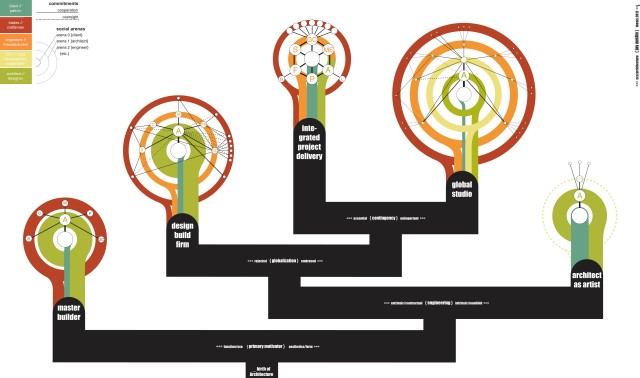[If a] system is dynamic there has to be the ability to exchange information all the time. At all scales data is fed through and transformed…what begins as a small set of instructions is multiplied into a complex web. (Balmond, 7)
Systemic responses to dynamic situations vary wildly. A working knowledge of which echelon within a regime is tasked with engaging mercurial realities fosters an understanding of how that organization might manifest these responses to volatility on the ground — take for example a column line undocumented in the as-built drawings provided a design team at the outset of a project. Manuel De Landa would term this discrepancy “friction,” anything which “interferes with the implementation of a tactical or strategic plan…’noisy data.’” (De Landa, 60) This friction could be impetus to shift the overlaid grid of new construction to a more harmonious abstract rhythm incorporating the surprise columns if discovered early and responded to by an architect. The same discovery by a trade partner after design documents are finalized and the project is under construction would create a localized, intensive and materially-dependent response; the difference between a strategic response and a logistical one, then, can be seen as a reification of hierarchically-driven separation of scope.
Systemic responses to dynamic situations vary wildly. A working knowledge of which echelon within a regime is tasked with engaging mercurial realities fosters an understanding of how that organization might manifest these responses to volatility on the ground — take for example a column line undocumented in the as-built drawings provided a design team at the outset of a project. Manuel De Landa would term this discrepancy “friction,” anything which “interferes with the implementation of a tactical or strategic plan…’noisy data.’” (De Landa, 60) This friction could be impetus to shift the overlaid grid of new construction to a more harmonious abstract rhythm incorporating the surprise columns if discovered early and responded to by an architect. The same discovery by a trade partner after design documents are finalized and the project is under construction would create a localized, intensive and materially-dependent response; the difference between a strategic response and a logistical one, then, can be seen as a reification of hierarchically-driven separation of scope.

